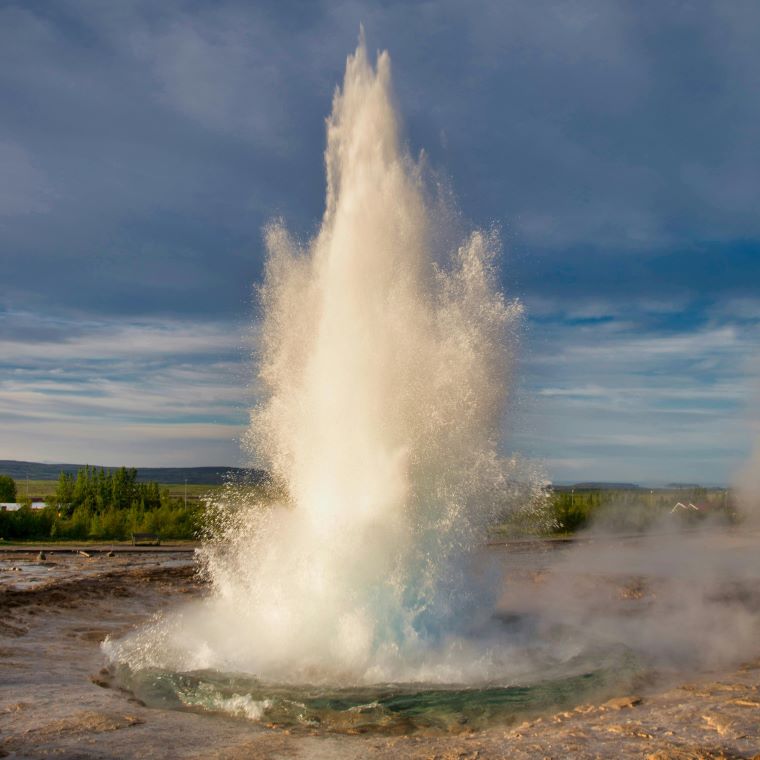
Ever ventured underground and felt like you’ve stepped into another world? Caves with spectacular speleotherms—those fancy formations like stalactites, stalagmites, and flowstones—offer a subterranean wonderland that rivals anything on the surface. From glittering crystal caverns to eerie limestone sculptures, these geological masterpieces will make you feel like an intrepid explorer uncovering nature’s best-kept secrets. Grab your helmet and flashlight and embark on a global journey to some of the most awe-inspiring caves packed with stunning speleotherms!
.
10. Aggtelek National Park, Hungary
Aggtelek Cave, also known as the Baradla Cave is part of the Aggtelek National Park in northeastern Hungary. This UNESCO World Heritage cave system stretches over 26 kilometers, with some sections extending into neighboring Slovakia. One of the highlights of Aggtelek Cave is the Concert Hall, a large chamber known for its excellent acoustics, where musical performances are occasionally held.
Significant archaeological excavations have revealed evidence of human habitation dating back to the Neolithic period.

The cave is highly accessible to visitors, offering a variety of guided tours that cater to different levels of interest and physical ability. The pathways are well-lit and maintained, ensuring a safe and enjoyable experience for all visitors. These tours range from short walks to more adventurous and longer explorations that delve deeper into the cave’s wonders.
9. Slovak Karst National Park, Slovakia
Slovak Karst National Park, located in southeastern Slovakia is also a UNESCO World Heritage site. It encompasses numerous caves, including the Domica Cave, Gombasecká Cave, and Ochtinská Aragonite Cave, each offering unique and stunning speleothems including rare aragonite formations.
Slovak Karst National Park also has a rich cultural history, with evidence of human activity dating back to prehistoric times, including archaeological findings in some of the caves.

The park is accessible to visitors, with several caves open for guided tours that provide educational insights into the geological processes and history of the area. Well-maintained pathways and lighting ensure a safe and enjoyable exploration of these subterranean wonders.
8. Reed Flute Cave, China
Reed Flute Cave, located in Guilin, China, is a renowned natural limestone cave that has captivated visitors for over a thousand years. Multicolored artificial lighting enhances the otherworldly appearance of the speleotherms. One of the most famous areas within the cave is the Crystal Palace, a vast chamber that can hold a large number of people and is often used for special events.
Reed Flute Cave also features ancient inscriptions dating back to the Tang Dynasty, adding a historical dimension to its natural beauty. The cave’s name comes from the reeds growing outside, which were historically used to make flutes.

The cave is highly accessible to tourists, with well-maintained walkways and guided tours available to help visitors navigate its spectacular formations.
7. Postojna Cave National Park, Slovenia
Postojna Cave, located in southwestern Slovenia, is one of the most famous and visited cave systems in the world. This extensive karst cave is full of spectacular speleotherms. One of the most iconic formations is the Brilliant, a dazzling white stalagmite that has become a symbol of the cave. Postojna Cave also has an underground concert hall, which can accommodate over 10,000 people and boasts exceptional acoustics, making it a popular venue for musical performances.
Additionally, the cave is home to the proteus, or “human fish,” a rare and fascinating amphibian that has adapted to the dark cave environment.

Postojna Cave is highly accessible, offering guided tours that include a unique electric train ride through the initial sections of the cave, followed by a walk through the most impressive chambers and passages. The tours are designed to accommodate visitors of all ages and physical abilities, ensuring a safe and informative experience.
6. Les Grottes de Beni Add, Algeria
Les Grottes de Beni Add, located near the town of Tlemcen in Algeria, are a remarkable network of limestone caves celebrated for their stunning speleothems. One of the highlights of Les Grottes de Beni Add is the main chamber, which is renowned for its vast size and the breathtaking formations that adorn it. The grandeur of the cave interiors is enhanced by the careful illumination that highlights their natural beauty.
The caves have been used as shelters by humans for thousands of years, with archaeological findings indicating habitation dating back to prehistoric times. The caves are part of the larger Tlemcen National Park, which offers additional natural and cultural attractions, making it a well-rounded destination for travelers.

The caves are quite accessible to visitors, with guided tours available to help navigate the impressive underground landscape. Pathways and lighting have been installed to ensure a safe and enjoyable experience for all visitors.
5. Thien Cung Cave, Ha Long Bay, Vietnam
Vietnam boasts numerous popular caves such as the colossal Son Doong Cave, the longest dry cave Phong Nha Cave, and the scenic Paradise Cave. Hidden in the heart of Vietnam’s Ha Long Bay, Thien Cung Cave, also known as the “Heavenly Palace Cave,” is a true gem of geological beauty. This cave dazzles visitors with its mesmerizing array of speleothems, including intricate stalactites and stalagmites that create the illusion of a natural palace.

Accessing Thien Cung Cave is an adventure in itself. It involves a short boat ride from the mainland, followed by a brief but steep climb up stone steps to the cave entrance. Once inside, well-lit pathways guide visitors through the cave’s stunning chambers, making it an accessible adventure for all ages.
4. Jenolan Caves, New South Wales, Australia
Jenolan Caves are located in the Blue Mountains of New South Wales, Australia. Estimated to be over 340 million years old, they are among the oldest and most spectacular cave systems in the world. Key attractions within the system include the Lucas Cave, known for its vast Cathedral chamber, and the Temple of Baal Cave, famous for its stunning formations and dramatic lighting.
The surrounding Jenolan Karst Conservation Reserve further enhances the visit, offering beautiful bushwalking trails and diverse wildlife.

The caves are highly accessible to visitors, with a variety of guided tours available to suit different interests and fitness levels. These tours range from easy walks through spacious chambers to more adventurous tours that involve climbing and squeezing through tighter passages. Jenolan Caves also offer a range of unique experiences, such as underground concerts and night tours.
3. Cango Caves, South Africa
Cango Caves, located near Oudtshoorn in South Africa, are among the country’s most impressive and accessible limestone cave systems. The cave system is particularly famous for its grand halls, such as the Van Zyl’s Hall, which is notable for its massive size and stunning array of formations.
The caves have a rich history of human habitation, with evidence of prehistoric use by the Khoisan people, adding an archaeological dimension to their natural beauty.

Cango Caves are highly accessible to visitors, offering a range of guided tours to accommodate different levels of interest and physical ability. The standard tour provides a relatively easy walk through the most spectacular chambers, while the adventure tour offers a more challenging experience, involving climbing and crawling through narrower passages.
2. Carlsbad Caverns, New Mexico, USA
Carlsbad Caverns National Park, located in southeastern New Mexico, is renowned for its vast network of underground limestone caves. Among the most impressive features is the Giant Dome and the Hall of the Giants, showcasing massive stalagtite & stalagmite columns.
Additionally, the park is home to a large colony of Brazilian free-tailed bats, which can be observed during their evening flight from the cave, offering a unique wildlife spectacle.

The park is highly accessible to visitors, offering self-guided tours and ranger-led expeditions through its main attraction, the Big Room, which is one of the largest underground chambers in North America. An elevator provides easy access from the visitor center to the cave entrance, making it possible for people of varying mobility levels to explore the underground marvels.
1. Terra Roncha, Brazil
Terra Ronca State Park, located in the state of Goiás, Brazil, has an extensive cave system including over 60 cataloged caves, with Terra Ronca I and Terra Ronca II being among the most famous. These caves feature impressive formations like stalactites, stalagmites, and large columns, alongside underground rivers that add to their allure.
Terra Ronca State Park also has subterranean waterfalls.

The park offers varying levels of accessibility, catering to both casual tourists and serious spelunkers. Guided tours are available, providing safe passage and insightful commentary about the caves’ geology and history. The entrances to the main caves are relatively accessible, but some deeper sections may require more advanced caving skills and equipment.
If you want to know how speleotherms are made check out the Geo Recipe!











